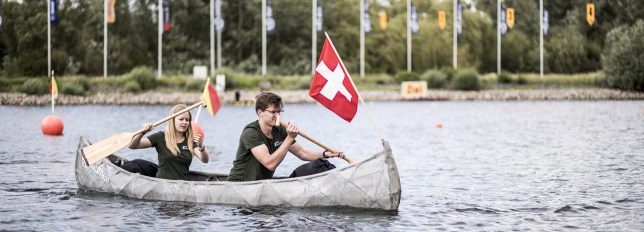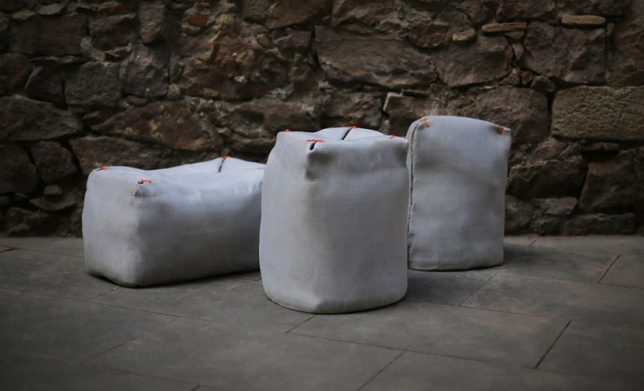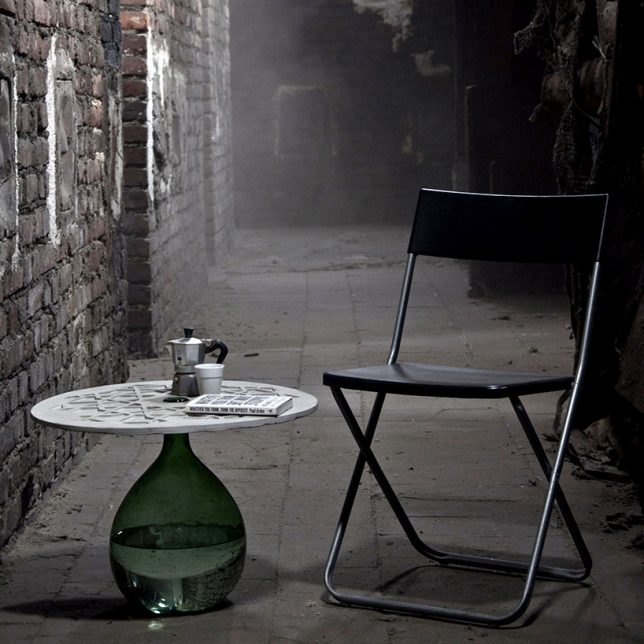Introduction
 |
| The SeaLife DC2000 in all its 1″-type sensor glory, and near its natural habitat. |
I have an addiction to small cameras with big sensors. I’ve owned a Ricoh GR, original Fujifilm X100 and still have a Nikon Coolpix A knocking around. The EOS M100 and 22mm F2 combo also fits the bill.
But with just how good 1″-type sensors have gotten lately and how well they can balance the compactness and speed of their lenses, I’ve been left wondering: Where are all the fixed lens, 1″-sensor compacts? The Canon G7 X II and G9 X II, Sony RX100-series and Panasonic LX10 all have short zooms in front of their sensors, and most manage to have pretty wide maximum apertures. Just think about how fast and yet compact a (possibly collapsible) prime lens could be on one of these.
 |
I deliberately underexposed this image to protect the highlights and brighten up the Raw file in post. With smaller-sensor rugged cameras, this would result in way more noise than you see here, even at base ISO.
ISO 125 | 1/800 sec | F1.8 |
Which brings us to the SeaLife DC2000, a compact camera with a 1″-type 20MP sensor and a 31mm-equivalent F1.8 prime lens in a waterproof, shockproof body. Despite being, on paper, pretty close to the ideal pocket point-and-shoot for me, it is most definitely not marketed toward me. It’s really targeted at the diving community, not land-based photography enthusiasts. It’s also not manufactured by one of the more ‘traditional’ camera companies, and as such, doesn’t benefit from the years of refinements and iterations that the likes of Canon and Nikon can take advantage of.
Key features
- 20MP 1″-type BSI-CMOS sensor
- 31mm-equivalent F1.8 lens
- Without housing, waterproof to 18m/60ft and shockproof to 1.5m/5ft
- Full manual and aperture controls
- 80MB internal storage, microSD slot
- 1080/60p video recording
- 3.5in / 9cm close focus
- Assortment of underwater and above-water scene modes
- Battery rated to 200 shots (CIPA)
I’ve been carrying the SeaLife DC2000 around with me over the past couple of weeks and attempting to use it as I use my Nikon Coolpix A – a fun snapshot camera to have on me that takes better quality images than my smartphone. Here’s what I found.
Image quality
 |
The sensor / lens combo on the SeaLife DC2000 is plenty sharp, with moiré apparent on the building in the distance.
Processed in Adobe Camera Raw | ISO 125 | 1/320 sec | F4 |
First of all, the DC2000’s image quality is pretty darn good. With what is likely the same sensor as a Sony RX100 III, you can expect good dynamic range and low light performance, particularly if you shoot Raw. The JPEGs out of the camera are solidly above-average with pleasing color most of the time, but sharpening and noise reduction are a little aggressive (no real surprise there). White balance strays a bit to the cool side, but whether you like that or not is really a matter of personal taste.
The lens is a great performer at all apertures
One criticism I have is that the tone curve applied to JPEGs can result in highlights that are a little abruptly clipped; it doesn’t happen all the time, but I was happy to have Raw files to play with to smooth the highlights out when this happened. Though there are an abundance of scene modes (I almost exclusively shot with it in Program Auto or Aperture Priority), it’d be nice to see some JPEG fine-tuning adjustments on future models.
 |
I don’t mind some intentional lens flare, but those sensitive to it will wish for a hood as the DC2000 can lose contrast with bright light sources near the edges of the frame. That said, despite having a flat glass protective element in front of the lens, flare is reasonably well-controlled.
Processed in Adobe Camara Raw | ISO 125 | 1/1000 sec | F5.6 |
I have to say I’m impressed with the lens on the DC2000. It’s a good performer at all apertures, is more than sharp enough edge-to-edge and even makes some decent sunstars. I just didn’t expect this sort of quality from such a compact lens in a small waterproof body, and it’s nice to be pleasantly surprised here. That said, there can be some green and purple fringing (lateral chromatic aberration) on high-contrast edges (see the image of the backlit trees earlier on), particularly if you’re shooting backlit subjects and brightening in post. There’s no profiles to correct this automatically in Adobe Camera Raw, but it’s easily taken care of manually with a few sliders.
In use
 |
The 1″-type sensor really makes a difference when the ISO value climbs.
Processed in Adobe Camera Raw | ISO 1600 | 1/125 sec | F1.8 |
Alright, so the images out of the DC2000 are pretty darn good. But what’s it like to use?
It’s a mixed bag. As you’d expect from a rugged waterproof camera, build quality is exceptional. The camera feels dense and solid, and though most buttons feel a bit mushy (a side-effect of the sealing no doubt), the shutter button has great feedback and an easy-to-feel distinction between the focus half-press and a full press to capture an image. The mode dial is likewise better-feeling than I expected.
The controls, though, are downright strange if you’ve ever used a digital camera from one of the more established manufacturers.
 |
| While the actual controls take some getting used-to, the layout is at least familiar. |
When browsing your captured images in playback, you go back by hitting ‘up’ on the four way controller, and forward by hitting ‘down.’* You will forget this, even after shooting with the camera for several weeks, and you will occasionally hit ‘left’ to go back. This will rotate your image 90 degrees counter-clockwise. You will then curse under your breath as you prepare yourself to hit that same mushy button three more times to turn the photo the right way around, with each press being followed by a pronounced delay if you’ve been shooting Raw files. There’s also no way that I can find to view your shooting settings in playback.
However, once you enable the ‘delete’ function for eliminating single or multiple images, ‘left’ and ‘right’ on the directional pad become the method for browsing images.
The controls are downright strange
As far as the Raw files go, they’re great to process but frustrating to capture. With around five full seconds required for the camera to write the huge 40MB files to the microSD card, this is not your next ‘caught moment’ burst camera. My old Coolpix A positively smokes the DC2000 in terms of interface and shooting responsiveness, regardless of whether I’m shooting JPEGs or Raws.
 |
|
A macro mode helps you get up-close-and-personal with your subjects.
Out-of-camera JPEG | ISO 125 | 1/1000 sec | F4.5
|
There’s also a wireless button that does absolutely nothing most of the time. Only after you’ve established a connection to your smart device with the ‘Link 123 Plus’ app does the wireless button bring up a menu option to automatically send each image to your phone. You can’t reassign it. I just downloaded my files from the card at the end of the day.
Lastly, when you go to change exposure parameters, you must press the ‘OK’ button before you can then adjust them by pressing up/down on the four way controller. Curiously, they work the opposite way I would expect, though, with ‘up’ lengthening the shutter speed and widening the aperture. You get used to it, but there’s still a bit of a disconnect there.
Some of this should be qualified, though, that simply putting the camera into ‘P’ or Auto modes gives generally good results for casual shooting (much of the gallery was shot this way). Unfortunately, if you’re hoping to fire off a quick shot or two to check settings (or if you’re underwater, check framing), this does little to mitigate the lag if you’re capturing Raw files.
Should you buy one?
This is a tough one. I’m absolutely in love with the idea of this camera, but am having a hard time rationalizing purchasing one.
 |
| Out-of-camera JPEG | ISO 125 | 1/800 sec | F5 |
If you’re in the market for a tough camera, like the Olympus TG-5 (a perennial staff favorite), the SeaLife DC2000 will absolutely reward you with higher-quality images if you can live without the zoom. It’s a great beach or vacation camera that can stand up to a fair amount of abuse. Power-on is quick, and you can also take an image quickly after startup. And then you’ll have to wait five seconds before the next image if you’re shooting Raw.
I can’t help but wonder how wide an aperture they could give this sort of prime lens if it were retractable and could forego the environmental sealing. That said, the SeaLife files stand up pretty well to those from my Nikon, and because of that sealing, I’ll never get dust on the sensor (this is an ongoing battle I have with retractable-lens cameras that I always seem to be on the losing side of).
I’m going to keep hoping and praying for one of the established manufacturers to make something that can approach the philosophy of the DC2000, but with greater responsiveness and more modern controls (though it’s possible SeaLife could address some of my qualms with a firmware update). If you can live with the operational quirks, it’s easy to recommend the DC2000 on the merits of its image and build quality. And of course there’s something to be said for the camera that’s always with you to also be able to take a knock or two.
Sample gallery
$ (document).ready(function() { SampleGalleryV2({“containerId”:”embeddedSampleGallery_5090018911″,”galleryId”:”5090018911″,”isEmbeddedWidget”:true,”selectedImageIndex”:0,”isMobile”:false}) });
*Our Senior Editor Barney Britton was kind enough to educate me on early Nikon digital bodies, such as the D1, which also have this control philosophy. Without going into detail, I’ll say that was before my time as a photographer.
Articles: Digital Photography Review (dpreview.com)











































You must be logged in to post a comment.